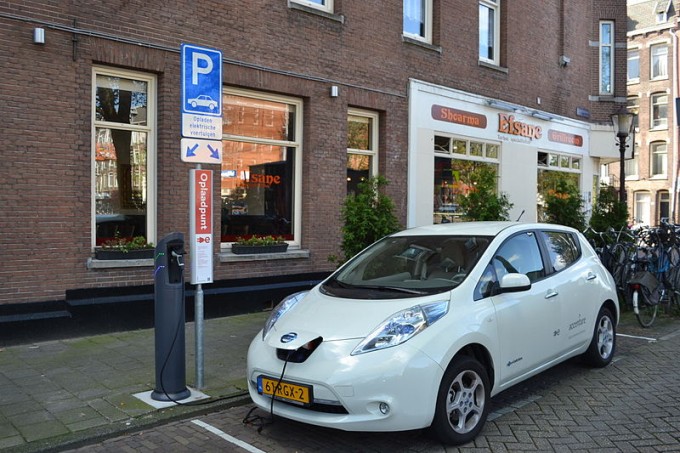
Here at EVstudio, we design within multiple disciplines, but I have recently found myself more and more focused on electrical layouts for housing. I’ve been running into a conundrum lately based on, of all things, the evolution of the auto industry. Hybrids and all-out electrical cars are on the rise. If you plan to live in your house for any reasonable amount of time, it is worth considering that at some point, electric vehicles may become the most economical method of transportation (some estimate the average price of gasoline to hit $5 per gallon by 2020). The LA Times reported in September that in August “Sales of rechargeable cars, which include plug-in hybrids such as the Chevrolet Volt and electric-only vehicles such as the Tesla Model S and Nissan Leaf, also set a record last month, climbing to 11,392, a 147% gain from the same period a year ago.” They go on to project that electric vehicles will make up 1.5% of the market by 2017. Based on the ideas that a) you own a car, and b) that you are one of the thousands of regular visitors to this website, this means that you may be that 1.5% that owns (or will own) an electric vehicle within the next few years. The problem with having a vehicle that doesn’t contain its own, easily replenished fuel source such as gasoline is that when you run out of battery power, you can’t go get a can of gas to fix it; you need to get towed to somewhere where you can charge the car for several hours. The two places that a car is likely to sit for several hours on a regular basis are at your place of employment and at your house. Further operating under the assumption that your workplace probably hasn’t provided vehicle charging stations, this narrows the most likely recharging point down to your house.
This is where our designers come into the picture. It is simple enough to design a garage that has a few GFI-protected, 110V outlets per code, but not a lot of people design a garage that also supplies the fuel for their vehicle. The most simple and dramatic adjustment that you may consider making to the design of your garage is to include a 220V utility outlet in the garage. Reports on various websites and forums point to the example of a Nissan Leaf (a fully electric vehicle). The reports indicate that to fully charge the Leaf on a standard, 110V outlet will take 16 to 20 hours! By comparison, fully charging on a 220V system will take 4 to 6 hours. The prospect of waiting 16 to 20 hours because you accidentally forgot to plug in your car (or let your gas gauge venture past “E”) the last time you used it, is pretty daunting and ridiculous sounding.
Although retrofitting a home to install a 220V outlet can be done, it will most assuredly be more expensive and inconvenient than just including it in the first place. As the popularity of electric vehicles climbs, having a 220V outlet in the garage may add significant appeal to your house if you are considering selling it at a future point, and will undoubtedly add convenience if you own an electric vehicle.








2 thoughts on “Turning Your Garage Into a Gas Station: Electric Vehicle Considerations in Garage Design”
Electric plugs for electric cars are going to become standard in garages. More and more people are getting electric cars. Thanks for sharing this.
You need a home designed by EV where you will one day be able to plug in your EV.
Comments are closed.